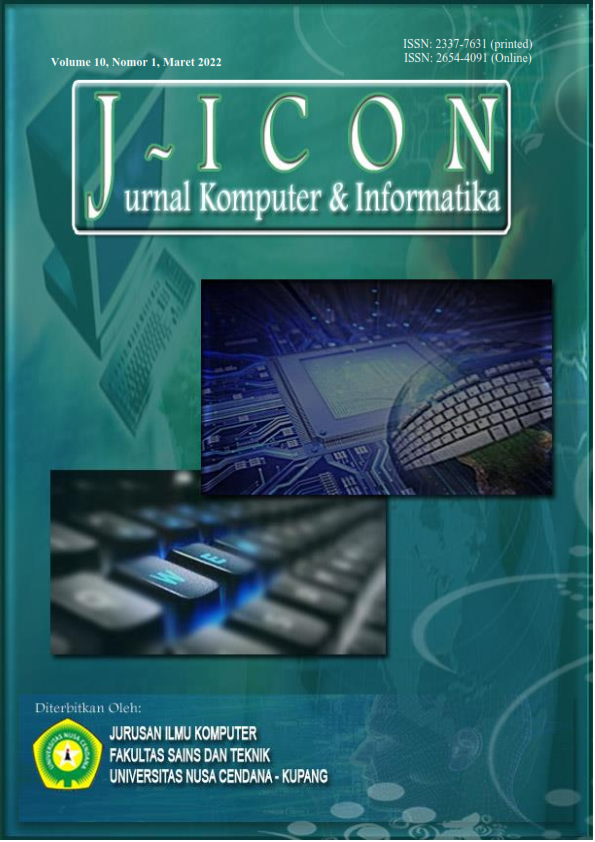Adoption of the Scrum Method for Requirement Elicitation of Smart Tourism
Abstract
The first step in software engineering is to get information about the scope and requirements of the system to be built. However, there are several problems that can hinder the process of designing the elicitation of smart tourism needs, such as a misunderstanding in the definition of system requirements that have been determined by one party, resulting in great potential for change. The purpose of designing the elicitation of smart tourism needs is to minimize the occurrence of change. The design of elicitation of smart tourism needs uses the scrum method which emphasizes team collaboration and is adaptive. The type of research used in this research is descriptive research with a qualitative approach. The results of the elicitation of smart tourism needs are a feature for designing smart tourism with a system design that focuses on use case diagrams using Unified Modeling Language (UML).
Downloads
References
D. M. Sari and A. S, “Implementasi Sistem Pengenalan Wisata Bahari Berbasis Website Kabupaten Majene,” Jurnal Teknik Informatika, vol. 13, no. 2, pp. 123–132, 2021, doi: 10.15408/jti.v13i2.16956.
N. K. Sukerti, “Sistem Pendukung Keputusan Menggunakan Simple Additive Weight (SAW) Dalam Merekomendasikan Obyek Wisata di Pulau Nusa Penida,” in Seminar Nasional Royal (SENAR), 2018, vol. 1, no. 1, pp. 93–98.
D. Danuri and J. Jaroji, “ELISITASI KEBUTUHAN PERANGKAT LUNAK REKRUTMEN PEGAWAI DENGAN PENDEKATAN SOFT SYSTEM METHODOLOGY,” Just TI (Jurnal Sains Terapan Teknologi Informasi), vol. 10, no. 2, pp. 42–45, 2019.
H. Saeeda, J. Dong, Y. Wang, and M. A. Abid, “A proposed framework for improved software requirements elicitation process in SCRUM: Implementation by a real-life Norway-based IT project,” Journal of Software: Evolution and Process, vol. 32, no. 7, pp. 1–24, 2020, doi: 10.1002/smr.2247.
S. Anwar, L. Andrawina, and A. F. Rizana, “Perancangan Sistem Informasi Untuk Pengelolaan Data Warga Dalam Tingkat Rt Dengan Metode Scrum Information System Design for Managing Data of Citizens in the Neighborhood Level with Scrum Method,” vol. 7, no. 2, pp. 6137–6146, 2020.
R. Wulandari, R. Setiawan, and A. Mulyani, “Perancangan Sistem Informasi Manajemen Wedding Organizer Online Menggunakan Scrum,” Jurnal Algoritma, vol. 16, no. 2, pp. 139–150, 2020, doi: 10.33364/algoritma/v.16-2.139.
N. Abdillah, “Analisis Pengaruh Faktor Adopsi Scrum Pada Startup Digital,” Teknomatika, vol. x, no. x, p. 1~5, 2019.
D. B. Kinasih and K. Kunci, “Pengembangan Sistem Informasi Pengelolaan Kinerja Karyawan (Studi Kasus: Modena Strategy System),” Jurnal Sains, Nalar, dan Aplikasi Teknologi Informasi, vol. 1, 2021.
L. Setiyani, “Desain Sistem: Use Case Diagram Pendahuluan,” Prosiding Seminar Nasional: Inovasi & Adopsi Teknologi 2021, no. September, pp. 246–260, 2021.
T. A. Kurniawan, “Pemodelan Use Case (UML): Evaluasi Terhadap beberapa Kesalahan dalam Praktik,” Jurnal Teknologi Informasi dan Ilmu Komputer, vol. 5, no. 1, p. 77, 2018, doi: 10.25126/jtiik.201851610.
Copyright (c) 2022 Dian Niswati, Asmawati S, Nuralamsah Zulkarnaim

This work is licensed under a Creative Commons Attribution 4.0 International License.
The author submitting the manuscript must understand and agree that if accepted for publication, authors retain copyright and grant the journal right of first publication with the work simultaneously licensed under a Creative Commons Attribution (CC-BY) 4.0 License that allows others to share the work with an acknowledgment of the work’s authorship and initial publication in this journal.
 Dian Niswati(1*)
Dian Niswati(1*)




